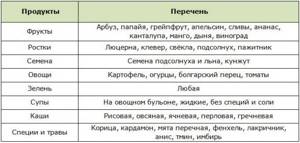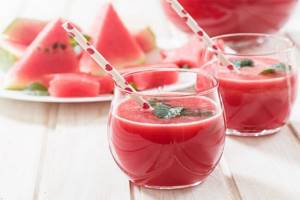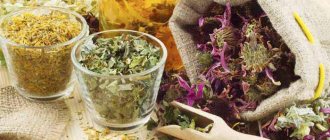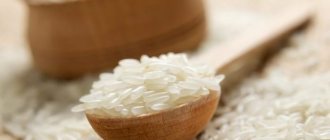Fasting is a technique often practiced in alternative medicine. People who practice giving up food not to cleanse the body, but to lose weight, often wonder: how to fast properly to lose weight? The answer is simple: giving up food will help with any chosen method; it is important to get out of hunger correctly and switch to a normal diet.
Why is he so important
Many experts consider breaking out of fasting to be one of its stages, without which the technique will not work. If it is not organized correctly, you can pay for it not only with your health, but also with your life. Unfortunately, there are cases where neglect of recommendations resulted in death. Therefore, it is so important to devote as much attention and time as possible to the recovery period.
What are its main functions:
- help the body adapt from internal sources of nutrition to external ones;
- ensure a gradual transition to a normal diet;
- remove toxins freely circulating in the body;
- start the digestive tract;
- restore the normal functioning of all organs without risk to health;
- mitigate the next stress for the body;
- minimize side effects and complications.
When recovering from fasting, important health processes occur in the body that you need to be able to control.
With the very first sip of juice (it is with this drink that it is usually recommended to start your exit) you will feel truly brutal hunger. During abstinence from food, it becomes dulled, as the body gets used to making do with internal reserves and the stomach stops sending appropriate signals to the brain. But as soon as the receptors sense the taste of food, the digestive system awakens and turns you into an insatiable giant who wants to eat everything that is in sight. Therefore, the first task of the recovery period is to tame this inner glutton.
After fasting, there are still poisons in the blood and tissues, and in considerable quantities. Many people wonder how this is possible: isn’t the goal of abstinence to cleanse the body of all these toxins? Yes, most of them are excreted, but the formation of breakdown products during metabolic processes occurs continuously. At the moment when you complete your test, some harmful substances that have already been released from the cell are circulating either in the intercellular space, or in the blood, or in the lymph. They are already ready to leave the body, but do not have time to do this, since the hunger strike is over.
If the exit is not organized correctly, all these poisons will return back into the cells and spread through the blood to the organs. It turns out that the effect of fasting will be neutralized. But this is not the worst thing. If during the recovery period you eat prohibited foods or allow yourself an extra piece, many additional harmful substances will enter the body with food. An empty stomach will immediately release them into the blood, which can cause severe intoxication. Hence the cases of death.
This means that the second main task of the exit is to remove freely circulating toxins, poisons and other toxic debris remaining from the body after fasting and prevent new ones from entering it.
Preparing for water fasting
Tuning in to all the weekly stages, before starting the hunger strike, you have to relax and improve your health by:
- Excluding fatty, starchy and sweet foods from food a few days before starting a hunger strike;
- Eating fruits and vegetables, cottage cheese products and low-fat vegetable soups;
- Refrain from exercise and use an enema the day before.
In the first 2 days of fasting, it is worth monitoring the body; if everything goes without deviations, then you can continue the full seven-day course.
When to go out
Usually everyone is interested in how to properly break fast, but rarely does anyone ask when exactly this should be done. The reason for this ignorance is clear. If a person chose a 7-day method, it means that on the 8th day you can already eat. However, not everything is so simple and unambiguous.
Few of the authors of fasting methods warn their followers about the conditionality of its duration. When determining the duration, they focus on average indicators. According to them, the acidotic crisis occurs on days 7-8, and they build on these numbers. But they are individual for everyone. For some, a fracture begins already on the 5th day, while others wait for it for 10-11 days.
In addition, there is a stereotype of human thinking regarding the time periods in which we live: one week, two, three, a month, 40 days. There are no methods designed for, for example, 17 or 33 days. And all these rounded terms do not in any way reflect the cycles by which each individual organism lives!
In this regard, you just need to focus on the periods indicated in the fasting methods, but at the same time listen sensitively to the body. He is the one who will tell you when to go out. If you miss this moment, there will be no effect, but complications are guaranteed to begin.

You need to stop fasting when:
- you felt hungry and wanted to eat, although over the past days such a desire has not arisen;
- you began to lose more than 0.5 kg per day (this “works” with long-term fasting);
- you are tired of starving, you have stopped feeling pleasure from the process;
- breath becomes fresh and clean;
- the sclera of the eyes is cleared of turbidity;
- the coating on the tongue disappears;
- The discharge no longer gives off an unpleasant odor, and the urine becomes lighter.
If the exit is organized for these reasons, the fast is considered fully completed. However, in some cases it has to be stopped urgently because the state of health deteriorates sharply. This is evidenced by specific and pronounced signs:
- severe ketoacidosis;
- daily fainting;
- persistent, uncontrolled tachycardia (more than 120 beats per minute);
- attacks of hepatic or renal colic;
- vomiting blood;
- severe pain in any organ;
- your health has deteriorated to such an extent that you have not had the strength to get out of bed for 2 days.
If the exit was organized urgently, the fast is considered unfinished. In this regard, it is hardly worth counting on the results that were originally planned to be obtained. In addition, in such emergency situations, the first thing to do is to seek professional help from a doctor and follow all his recommendations.
How many days does it last
The duration of the exit depends on the timing of the fast itself. But even on this issue, experts do not have a clear opinion. For example, Arnold De Vries (USA) recommends the following scheme:
- with a fast lasting 1-3 days, the yield may be only 1 day;
- 4-8 - 2 days;
- 9-15 - 3 days;
- 16-24 - 4 days;
- 25-35 - 5 days;
- more than 35 - 6 days.
Most researchers criticize De Vries's scheme, saying that a six-day recovery from a long fast is too short a period for a recovery period. Therefore, there are other options:
- The exit should last exactly as long as the fast itself.
- It should be half as long.
- It should be twice as long.
The best option, according to most, is the latter. It allows you to allocate enough time both for juice therapy and for the gradual introduction of solid foods into the menu. During other periods, you may simply not have time to do this.

There is another technique for determining how long the exit should last:
- on a juice diet (first phase), you need to sit until the feeling of bitterness in your mouth, which will be felt after every sip, goes away;
- on liquid food (second phase) - until the functioning of the gastrointestinal tract normalizes (discomfort, bloating, pain in the stomach area disappear);
- on a vegetarian diet (third phase) - until you get tired of it.
As most authors of various methods note, you can remain in the third phase of recovery for the rest of your life: it is good for health and for losing weight, and it will also replace the preparatory stage for the next fast.
Basic recommendations
To organize the correct way out of fasting, you need to adhere to the following recommendations.
- Organize split meals.
- Expand your diet with new products gradually.
- Drink at least 2 liters of water per day.
- Try to rest during the day (sleep or just lie down) for at least 2 hours.
- Lead a healthy lifestyle: get enough sleep, avoid stress, breathe fresh air, move more.
- If any side effects or complications occur, do not attempt self-medication, but seek medical help.
The rules for the recovery period after fasting are in many ways similar to exiting weight loss diets. The more accurately you follow them, the faster the body will adjust to its previous diet without harm to health.
Efficiency and results of fasting for 7, 9, 10, 11 days
The effect of a week or two weeks of not eating in preparation for and systematically exiting the state of hunger, without overeating, is only positive. According to reviews and photos of practitioners, giving up food has a beneficial effect on health:
- Removal of poison, toxins through urine, skin pores, mucous membranes.
- Kidney cleansing.
- Unloading the body.
- Losing weight, losing excess weight in a short time.
- Improved physical and mental condition.
- Getting rid of bad habits, smoking, alcohol.
Nutrition
Authorized products

Prohibited Products
- Meat and all its derivatives;
- fish, seafood;
- dairy products (although Malakhov suggests starting with sour milk);
- salt, sugar;
- bakery, pasta, confectionery products;
- sweets;
- legumes, cabbage, carrots, beets, onions, garlic;
- bananas;
- vegetable oils.
Phases
The first phase is juice therapy:
- For the first 2-3 days, drink freshly squeezed fruit juices diluted half with water.
- In the next 2-3 days you can drink them without dilution.
- On days 5-7 - with the addition of pulp.
- Drink through a straw, in small sips.
- Daily norm: on the first day - no more than 2 glasses, and then each subsequent day add 1 glass.
- Sugar, salt and other additives are prohibited.
The second phase is pureed and liquid dishes:
- Vegetable broths without adding salt and spices.
- Fruit, vegetable and green smoothies.
- Liquid porridge on water.
- Puree fruits, vegetables, herbs.
- Nut milk.
- In order not to gain weight (it usually begins to gain during this phase), increase your daily caloric intake gradually (+ 100 kcal daily).

The third phase is the transition to solid food:
- The ideal product for the first days of this phase is watermelon.
- Also good are grapefruits, oranges, grapes, green apples, red plums, mangoes, pineapple and papaya.
- Eat sprouted wheat grains, as well as green young shoots of healthy herbs (clover, alfalfa).
- Only after a week can you try peaches, apricots, cucumbers and bell peppers.
- Legumes are undesirable in any form (even sprouted).
- You can put vegetables in soups, and cook porridges thicker. They should be warm at first, but gradually bring them to a hot state.
- Dried fruits are allowed only if they are well washed and soaked (at least 6-8 hours in warm water).
People often ask whether tomatoes and bananas can be included in the menu when recovering from fasting. Tomatoes - only in the middle of the third phase, along with the introduction of cucumbers and peppers. You can’t do it right away, as they contain too many acids. Although there are authors (Suvorin, Malakhov) who recommend eating them from the very beginning. Due to their viscous structure and excessive sweetness, it is better to try bananas as late as possible.
It is debatable whether it is possible to end a fast on nuts. Not all authors of methods allow this, since they contain too much fat, which is undesirable to include in the diet during the recovery period. If only during the third phase you include them in small quantities in crushed form in porridges and cocktails. But you definitely shouldn’t get carried away.
Selected recommendations
- Don't overeat.
- Eat while sitting (food is better absorbed this way).
- Swallow food little by little, chewing thoroughly. Rushing while eating is strictly prohibited.
- Make a meal schedule and strictly follow it.
- Avoid combined, multi-ingredient dishes.
Sample menu

Options
Exit from fasting can be organized on the basis of a single product (something like a mono-diet), taking into account a certain property of it.
On oatmeal
- During the first days, instead of juices, you can drink oatmeal jelly in limited portions, which has excellent cleansing properties.
- Then start preparing liquid oatmeal using water, but without adding salt, sugar or even fruits and berries. Eat 6-7 times a day, 3-4 tbsp. l.
- By the end of the release week, you can start adding bran, pieces of permitted fruits and berries to your oatmeal, prepare slimy oatmeal soup for lunch, and drink fruit and berry smoothies with the addition of this grain.
- In the first days, it is better to take well-ground flakes, and then gradually switch to whole grains.
Exit with watermelon
- It is organized only if the end of fasting occurs in August-September.
- Recommended for those whose fasting was difficult due to severe intoxication. Watermelon with its strong diuretic effect will eliminate poisons circulating freely in the body.
- There is a contraindication: kidney or liver problems.
- The first 2-3 days - watermelon juice, half diluted with water. No more than 2 glasses per day.
- Another 2-3 days - juice in concentrated form and increasing the volume to 4 glasses.
- Then eat the watermelon itself (+ juice) every day, gradually increasing the portion size.
- Release time: no more than 1.5 weeks.

Berries at the end of fasting
- Allowed only if the exit occurred during the berry season.
- It is recommended to use strawberries, raspberries, cranberries, currants, gooseberries, sea buckthorn, rose hips, lingonberries, and blueberries for this purpose.
- How to properly prepare berries: rinse, crush, pour warm water overnight, strain the next morning. In the first 2-3 days, drink only this berry water.
- Then you can eat the berries themselves, crushed and swollen in water.
- By the end of the week, you can make fruit drinks, juices from them and eat them fresh.
- It is advisable to eat 1-2 tsp daily along the way. bran, otherwise berry acids will harm digestion.
Such options are good because they allow you to choose a product that you like or whose properties you simply need at the recovery stage.
For pancreatitis
Therapeutic fasting for pancreatitis requires a special solution:
- 1 day - only vegetable broth.
- 2 - vegetable liquid soup.
- 3-4 - slimy cereal soups and porridges.
- 5-6 - dried bread, bran, low-fat cottage cheese, kefir.
- 7-8 - fish, eggs, meat, baked apples, compotes, berry jelly.
After 2 weeks, it is recommended to go on a protein diet for a while.
Exiting therapeutic fasting in the presence of such serious diseases as pancreatitis should be carried out under the constant supervision of doctors.
Contraindications
Water fasting, if done independently at home, is recommended to be practiced only by healthy people. And it is not so important for what purpose you are fasting, in order to lose weight or for general health. Absolute contraindications are:
- severe heart disease;
- active tuberculosis;
- severe blood diseases;
- malignant tumors;
- diabetes mellitus type I;
- bronchiectasis;
- thyrotoxicosis;
- thrombophlebitis;
- body weight deficiency;
- post-infarction period;
- pregnancy and lactation period.
There are also relative contraindications to water fasting. This:
- diabetes mellitus type II;
- gout;
- cholelithiasis;
- hypotension;
- peptic ulcer;
- chronic venous insufficiency;
- childhood or old age;
- febrile conditions.
Complications and side effects
Unfortunately, recovery from fasting does not always go smoothly and without problems. Some of the side effects are natural and are explained by processes occurring in the body during this period (for example, nausea or headaches). They are usually temporary and can be fixed on your own. However, sometimes your health gets out of control, and then you can’t do without medical help.
What you need to know about your health when breaking fast:
- For constipation, you can give cleansing enemas and take magnesium.
- For severe headaches, take a cool shower, breathe fresh air, and practice breathing exercises.
- If you have aches and pain in your joints, review your diet for the presence of salt and remove it from dishes.
- Many people feel sick when going out (this is a normal and temporary condition that needs to be endured) - at the moment of an attack, sniff a clove of garlic, put a slice of lemon in your mouth (but do not swallow), chew a crust of rye bread.
Just when planning a fast, think in advance about whether you will be able to properly organize a way out of it. It is advisable to spend the first 2-3 days at home, as they will be difficult both in terms of side effects and in terms of well-being. And always remember that the recovery period is no less important than abstinence itself.
What to remember
The process of recovery from dry starvation is a very important process. Most experts believe that more attention should be paid to the recovery time of the body after the process itself.
It is forbidden to rush and violate basic principles. There is a risk of getting exactly the opposite results.
Thank you for your attention. Have you, dear reader, practiced the techniques described? Share your observations below. Don't forget to subscribe to the newsletter, there's a lot of interesting things ahead.
See you on the blog pages!










